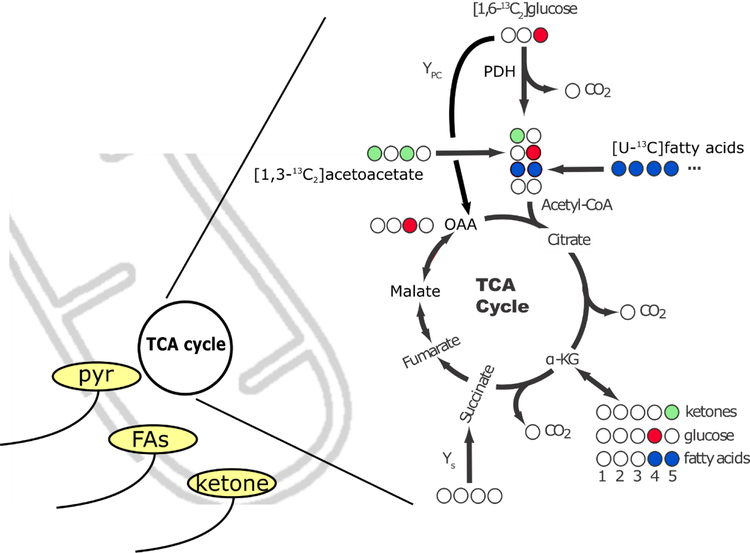Figure 1.
Substrate delivery to mitochondria and subsequent oxidation. A) Metabolic scheme for the carbon labeling of glutamate that would be expected on the first turn of the TCA cycle upon administration of [1,3-13C2]acetoacetate, which would produce C5-labeled glutamate (light green). Administration of [1,6-13C2]glucose produces methyl-labeled pyruvate, and subsequently C4-labeled glutamate (red). Uniformly 13C enriched fatty acids produce doubly-labeled glutamate on the first turn of the cycle (blue). Because of the J-coupling that exists when 13C nuclei share a chemical bond, and the chemical shift selectivity of the NMR experiment in general, the various isotopomers of glutamate can be readily identified. Alternatively, pyruvate carboxylation by either pyruvate carboxylase or the malic enzyme can act to produce oxaloacetate from pyruvate, which would result in a [2-13C]oxaloacetate (OAA, red). Due to rapid backwards exchange into the symmetric intermediate fumarate, [2-13C]OAA and [3-13C]OAA come to an equal distribution when at steady state.

